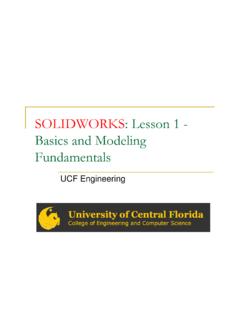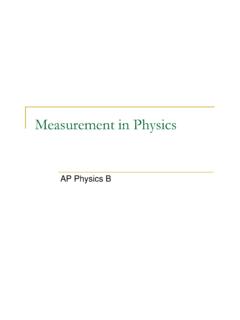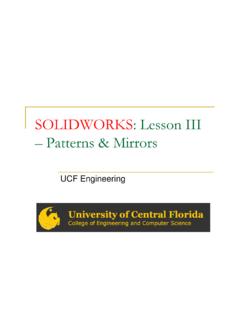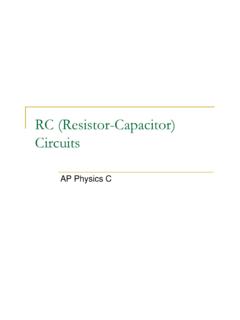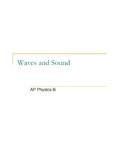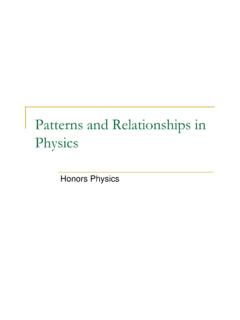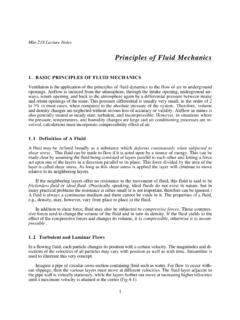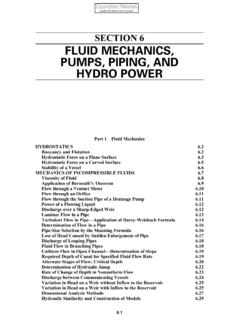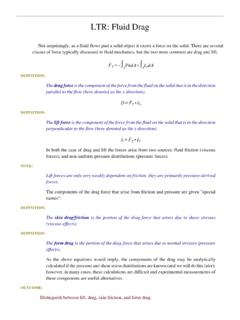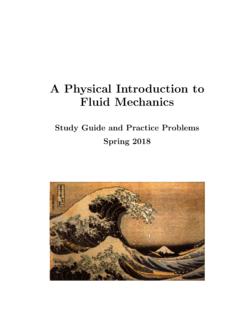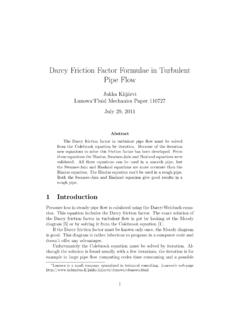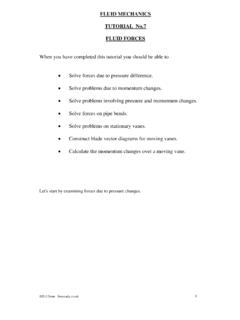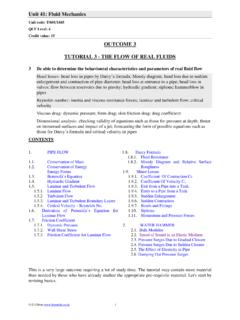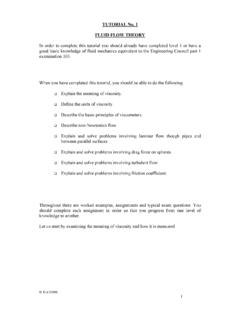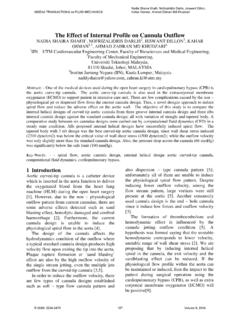Transcription of Fluid Mechanics -Hydrostatics - bowlesphysics.com
1 Fluid Mechanics - HydrostaticsAP Physics BStates of MatterBefore we begin to understand the nature of a Fluid we must understand the nature of all the states of matter:The 3 primary states of matter -solid - Definite shape and volume. -liquid -Takes the shape of its container, yet has a definite volume. -gas - Takes the shape and volume of its "states -Plasma, Bose-Einstein CondensateDensityThe 3 primary states have a distinct density, which is defined as mass per unit of is represented by the Greek letter, RHO , What is a Fluid ?By definition, a Fluid is any material that is unable to withstand a static shear stress.
2 Unlike an elastic solid which responds to a shear stress with a recoverable deformation, a Fluid responds with an irrecoverable of fluids include gases and fluids are useful in physics?Typically, liquids are considered to be incompressible. That is once you place a liquid in a sealed container you can DO WORK on the Fluid as if it were an object. The PRESSUREyou apply is transmitted throughout the liquid and over the entire length of the Fluid of most important applications of a Fluid is it's pressure- defined as a Force per unit AreaExampleA water bed is m on a side an cm deep.(a) Find its weight if the density of water is 1000 kg/m3.
3 (b) Find the pressure the that the water bed exerts on the floor. Assume that the entire lower surface of the bed makes contact with the == = ) m31200 kg11760 N====2411760)mNAmgAFPb2940 N/m2 hydrostatic PressureSuppose a Fluid (such as a liquid) is at REST, we call this hydrostatic PRESSURETwo important points A Fluid will exert a pressure in all directions A Fluid will exert a pressure perpendicular to any surface it compactsNotice that the arrows on TOP of the objects are smaller than at the BOTTOM. This is because pressure is greatly affected by the DEPTH of the object. Since the bottom of each object is deeper than the top the pressure is greater at the vs.
4 DepthSuppose we had an object submerged in water with the top part touching the atmosphere. If we were to draw an FBD for this object we would have three weight of the force of the atmosphere pressing force of the water pressing upmgFatmFwaterFwater= Fatm+ mgPressure vs. DepthBut recall, pressure is force per unit area. So if we solve for force we can insert our new equation +=+==+== =+=+==Note:The initial pressure in this case is atmospheric pressure, which is a closer look at Pressure vs. DepthghPPo +=ABSOLUTE PRESSUREI nitial Pressure May or MAY NOT be atmospheric pressureDepth below surfaceghP = Gauge Pressure= CHANGE in pressure or the DIFFERENCE in the initial and absolute pressureExamplea) Calculate the absolute pressure at an ocean depth of 1000 m.
5 Assume that the density of water is 1000 kg/m3and that Po= x 105Pa (N/m2).b) Calculate the total force exerted on the outside of a cm diameter circular submarine window at this +=+=PxPghPPo)1000)( )(1000(1015 ====22) ( x 105NA closed systemIf you take a liquid and place it in a system that is CLOSED like plumbing for example or a car s brake line, the PRESSURE is the same this is true, if you apply a force at one part of the system the pressure is the same at the other end of the system. The force, on the other hand MAY or MAY NOT equal the initial force applied. It depends on the can take advantage of the fact that the pressure is the same in a closed system as it has MANY idea behind this is called PASCAL S PRINCIPLEP ascal s PrincipleAnother Example - BrakesIn the case of a car's brake pads, you have a small initial force applied by you on the brake pedal.
6 This transfers via a brake line, which had a small cylindrical area. The brake Fluid then enters a chamber with more AREA allowing a LARGE FORCE to be applied on the brake shoes, which in turn slow the car an object is immersed in a Fluid , such as a liquid, it is buoyed UPWARD by a force called the BUOYANT the object is placed in Fluid is DISPLACES a certain amount of Fluid . If the object is completely submerged, the VOLUME of the OBJECT is EQUAL to the VOLUME of Fluid it 's Principle" An object is buoyed up by a force equal to the weight of the Fluid displaced."In the figure, we see that the difference between the weight in AIR and the weight in WATER is 3 lbs.
7 This is the buoyant force that acts upward to cancel out part of the force. If you were to weight the water displaced it also would weigh 3 's PrincipleFluidobjectFluidBFLUIDBVVVgFVmm gF====)()( ExampleA bargain hunter purchases a "gold" crown at a flea market. After she gets home, she hangs it from a scale and finds its weight in air to be N. She then weighs the crown while it is immersed in water (density of water is 1000 kg/m3) and now the scale reads N. Is the crown made of pure gold if the density of gold is x 103kg/m3?========= = objectobjectobjectobjectobjectfluidfluid fluidFluidBBbuoyantwaterobjectairobjectV mmassVVgVmgFFFFF )( )()( kg8000 kg/m3NO!
8 This is NOT gold as 8000<19300


